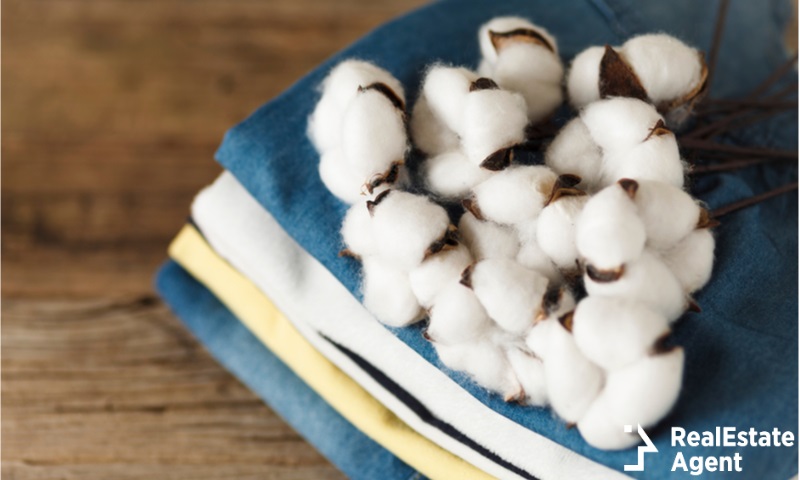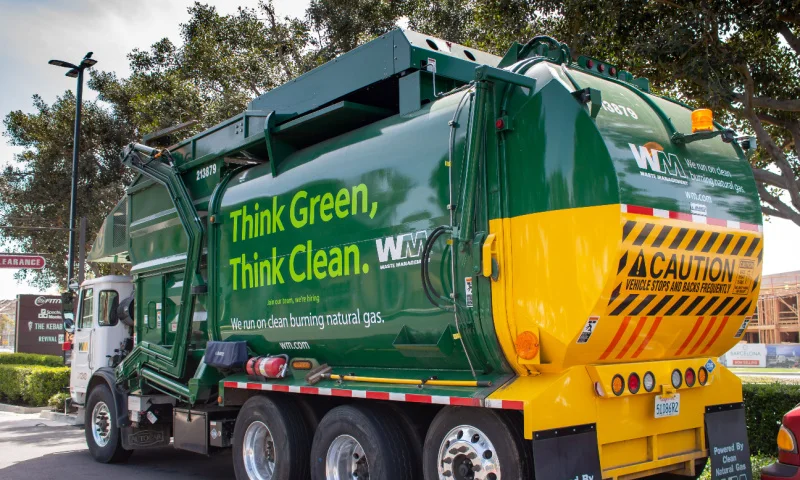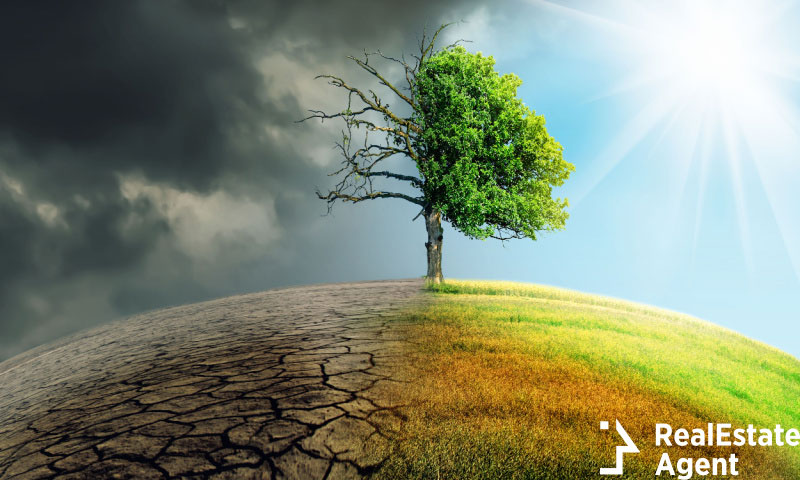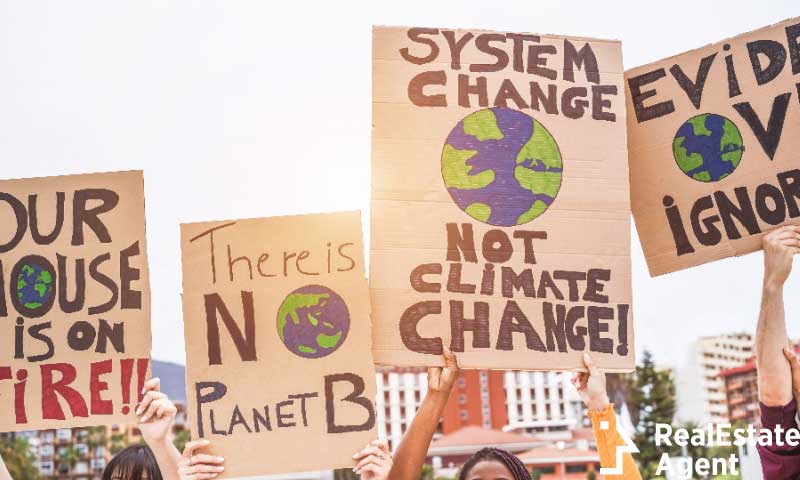The race towards saving our planet and limiting the negative impact we have on our environment in any way possible is gaining more and more traction. The younger generations led by the prominent millennials are questioning the standards by pushing towards a greener and more sustainable future. The industries are second-guessing their practices, and many are transitioning towards eco-friendly alternatives. These newer generations are not to be trifled with because they have all the weapons at their disposal. From marches promoting sustainability to social media posts that can quickly turn into vendettas against the world’s largest corporations, they know where, when, and how to hit.
Our world is changing, and the largest pollutants are no longer overlooked or underestimated. More and more people are educating themselves through various platforms. Topics like treatment of workers, chemicals used in production, and pollution levels are impossible to dismiss. We belong to a world that wants to be improved, that wants to change, and a world that knows that change is possible. By pushing and pressuring the world’s biggest pollutants for the alternatives that are already available, we push the whole world into a greener tomorrow for us and the generations to come.
Summary:
Pollution 101
Climate change is not fiction or a conspiracy theory. It is as real as the earth we walk on, the water we drink, and the clouds above our heads. Keeping all these elements clean is the only way in which we can move forward. Whether it is the food that we eat and its production cycle, the clothes that we wear and where they come from, the technology that we use, and how much power it uses, the type of energy used, every aspect of our modern lives leaves a footprint on our climate. We often refer to it as the carbon footprint related to the level of carbon released into the atmosphere for a particular product to be in your hands. However, these footprints are starting to look like canyons, and the planet won’t be able to endure this for much longer.
Pollution can be a result of the phone you hold in your hand, the lightbulb that illuminates your home, the food on your table, the gas in your car, and yes, the clothes that you wear. Did you know that the fashion industry is considered to be the second-biggest polluting industry? If you knew that, know that it’s not true. However, that does not mean that the fashion industry should continue as it had for the past century. No. A big chunk of the blame is worn with every piece of clothing that you wear for one season, then thrown away. This information might not be the cheeriest one, but it’s the truth. What we wear has an immense impact on climate change because the production of clothes results in environmental threats from the industry. From chemicals used to color materials to those used to treat plants from which the material is made, and, of course, to the plastic embedded in the materials from which clothes are made, the fashion industry is a big polluter—especially something that is called fast fashion.
Fast Fashion vs. Ethical Fashion
If you aren’t too interested in fashion or are unaware of its impact on our daily lives, the term fast fashion might be new to you. Like fast food, fast fashion is the fashion of questionable quality, produced in a matter of minutes, for mass consumerism, with little to no concern for sustainability.
Fast fashion is what you find in most clothing shops – the type of clothes made in bulk, trillions of pieces that look the same and can be shipped everywhere around the globe. Fast fashion is an antonym of personalized fashion and ethical fashion at the same time. While personalized fashion is hand-made, unique, and personal to each individual, fast fashion is made by programmed robots or machines, made in bulk, and identical. While ethical fashion is made from sustainable, high-quality materials, in ethical working conditions, and meant to reduce consumerism, fast fashion does the opposite. It promotes consumerism through inferior materials that require you to replace your clothes in a month, manufactured by workers who work in questionable conditions.
The first thing that we should stop doing is only wearing an outfit once. That idea is what stays at the basis of consumerism. Just imagine needing 365 individual outfits for each day of the year. That would mean that in 30 years, you will have worn around 10,950 outfits. It is insane to even think about it and you would need some incredible closet organization tips for that amount of clothing. The most unbelievable aspect of this way of using clothes is that the amount of waste generated from such a way of life is beyond astronomical, even for one person.
This might be an exaggeration, but the idea that one shouldn’t wear an outfit twice or that you can’t wear that dress to brunch with friends because they already saw it is unacceptable. I can not understand how that idea gained so much traction when we think about everything it entails. But fast fashion promoted it through low-quality clothes, from no-quality materials that you can only wear a handful of times before the fabric wears through. The color fades, and you will throw the item of clothing away after a few uses. That is what fast fashion created, and that is what ethical fashion is battling with. The solution to fix this issue isn’t easy, but there are ways to start making changes to the industry, and some manufacturers are taking steps. Investing in green energy is a great way to go, whether solar, wind, or, the best options, hydroelectric power and nuclear.
Quality over Quantity
There are many issues with fast fashion that we could cover, but that might turn this article into a novel, so I’ll only name a few.
- The price you pay for a t-shirt should give you an idea of the quality of the clothing. While it is more appealing to pay $10 for a shirt, you might only get a few quality wears from it before the article of clothing loses its shine.
- The material’s resistance to stretching or pinching and how fast it goes back to its original shape is another tell-tale sign. Quality materials bounce back even if they don’t stretch or have elastic through them.
- The cuffs, collars, and waistband should be reinforced to ensure that they maintain their rigidity over time. A shirt with reinforced areas will be used for a longer period of time because it will hold its shape.
Any piece of clothing that is made from high-quality materials will last longer. It’s as simple as that. The downside that many consumers cling to is the price that comes with quality products. But think about it like this. You can either buy a t-shirt for $10 that you have to replace in about a month, or you can save money, buy a t-shirt that starts at $50 but will be in great condition for a much longer time.
The Real Cost of Fast Fashion
We’ll focus on the price tag for one second longer. When you look at a shirt that you like and see a price tag that says $20, you think that it’s a bargain, a low impact on your wallet, and are likely to purchase it without a second thought. But think about it for a minute.
That price tag covers expenses from production, transportation, and marketing. But how? I mean, it’s $20. That’s nothing when you think about it. But that price tag hides incredible environmental and humanitarian costs that big manufacturers do not make public – costs like dire working conditions, low wages, dangerous chemicals, astronomic carbon footprint, pollution of rivers in third world countries.
Now that we got to third-world countries, I can hear you starting to comment about how the US has incredible restrictions on pollutants. Yes. The regulations implemented on the cotton industry are great and on an ascending trend; however… and it’s a big, however … outsourcing occurs in every US industry.
When we say outsourcing, we mean the legal right of any producer to outsource its production, which means that big brands can have headquarters and factories only to produce their items in third-world countries where they don’t have to deal with the strict regulations imposed in the US. So … how is the planet to gain from that? The answer is, it can’t. While pollution doesn’t happen in your backyard, it does happen elsewhere. And the worst thing about pollution is that it doesn’t matter where it happens. We will all feel its impact one way or another. And the fashion industry does it in order to leave you struggling to organize your closet on a budget as you spend too much on the content of your closet.
Be an Ethical Consumer
There are things that we can all do without going bankrupt to have an impact on the fashion industry. The first thing is to take a moment to consider all the clothes that we own. If you have a big closet or a walk-in closet, it might take you a while but think of each item in turn and try to remember how many times you wore it.
Analyze each item of clothing and decide whether you will still use it, if the material is high-quality, if it can be matched with as many other articles of clothing, and if it still brings you joy. The KonMari method of decluttering is a good way to pick and choose which article still has a home in your closet and which doesn’t.
Organic
Through the word organic, we want you to think of the materials of your clothing, both the ones you own and the ones you consider purchasing. The most common material in the world is cotton. Still, while it is bio-degradable and durable, it is not organic unless grown explicitly in a bio-friendly environment. In America, only around 20% of all cotton production is organic, bio-friendly, and unharmful to the environment. The greenest plant from which clothing can be manufactured is hemp. It grows fast, with no excess irrigation, on its own and the process necessary to turn it into the material is harmless. The best thing about hemp is that even paper can be made out of it without cutting down historical forests. Because while a forest needs decades if not centuries to regenerate, hemp regenerates in a year.
Polyester is the biggest villain of this story because while the clothes from polyester are cheap, they only last you a season. Still, the material takes between 20 to 200 years to decompose. Leather has another significant impact on the environment, firstly because it needs animal death to manufacture. Secondly, the factories in China, Brazil, and India pollute their rivers to paint the leather and make it easy to work with. The Gange, the sacred Indian river, is toxic for consumption because of it. That river flows into the Indian Ocean. The ocean waters are connected, so pollution in India is harmful to everyone, including the US. There is eco-friendly leather made from some type of mushroom or other sustainable alternatives available that don’t require an animal to die for the jacket or boots to be produced. Also, reusing the fabric of a leather coat, fixing your leather boots, and taking more care of the leather items you have will prolong their lives. So, even if you do have leather products, try to maximize the use you can get out of them and make sure they are good quality materials.
Local
The perfect transition into local manufacturers is done here because while companies outsource their production to other parts of the world, some don’t. Local manufacturers are more sustainable and ethical because of the regulations that impose certain production practices and how they produce those clothes. Workers are respected more than in third world countries, production is not as accelerated because of that, and the chemicals through which the clothes are made do not end up in rivers.
Local manufacturers are also less likely to generate such a high negative impact on the environment because they live close to where you live, and accountability is easily imposed on them. You can simply file complaints to your local political leaders to put pressure on the industry for change. Doing this for a company that manufactures products halfway around the globe isn’t easy.
Something else that makes local producers more accountable to the environment and you, is that it is easier to discover their production practices. You can find out if they use chemicals, what chemicals are used, how they grow their cotton, and their factories’ working conditions. Big companies implement changes every day, and local initiatives can place more pressure on them.
One of the most important aspects of local manufacturers is that they don’t consume immense quantities of heavy fuel to transport their products. However, something to keep in mind is that with high amounts of manufactured products, the amount of resources consumed diminishes. This is the puzzle that needs to be addressed to have sustainable local produce throughout.
Easy to Wash
This is a simple one. Materials that are easier to wash are materials that use less water. Ensure that those products you use to keep your clothes clean are eco-friendly with limited or no chemicals in them. Use a washing machine with a lateral opening as they use less water and electricity to wash than top-opening washing machines. Don’t use a drier because it affects the quality of your clothes and makes it necessary that you replace your clothes more often. Hang your clothes out to dry instead. From there on, sustainability becomes a lifestyle.
The water temperature at which you wash your clothes is also important as the cooler the water is, the less energy is required to get it to that temperature. I don’t mean you should wash your clothes in ice water, but try to warm up to 86 degrees Fahrenheit. Also, when your shirt is not completely dirty, and you only have one stain on it, try hand washing it if it’s not too much of a bother. Use bio-friendly deodorants that don’t stain your clothes and substantially diminish the need to clean them. Hand-washed clothes will also retain their material density for longer. For jeans, always turn them inside out when you’re throwing them in the washing machine.
High-Quality
Like anything else, clothes that are made from high-quality materials will be easier to maintain. As mentioned above, look at the cuffs, collars, and waistband. If those areas of your white work shirt are hardened, they will keep their shape easier—less struggle to iron them or ensure that your collar is straight and presentable. The number of times you wash an item of clothing can also affect the material so try washing your clothes only when necessary in the washing machine. Do it by hand when possible. It is much less stressful on the fabric like that, and your clothes will maintain their quality for a longer period of time.
When browsing the clothes you have and deciding which to keep as well as when you are considering buying new clothes, inspect their edges. The hem, waistband, shoulder seams, and neckline inside the clothes should be precise, lie flat, with smooth finishes and even stitches. Anything with bunched fabric, uneven stitches, or unfinished edges doesn’t only look cheap but is cheap and will be useless after a few washes.
Information
Educate yourself on everything that your clothing entails. This step might require some work, but if your concern for the environment is high, it’s necessary to work. If you change your wardrobe and the way you live, you will have an impact, but it will be a small one. Verifying your favorite clothing manufacturer to ensure they use sustainable means to produce, ship, and market their products is the least you can do and is not as difficult as you might think. Just check the country where the pair of jeans is produced and research the manufacturing practices in that country. As I mentioned India and Brazil when it came to leather, those same countries can have clothing manufacturers that adhere to sustainable practices. For example, a Denim company in Italy has a minimal carbon footprint and produces high-quality jeans at relatively affordable prices of incredible quality. Some brands that apply ethics within their production are Everlane, Outerknown, Levi’s (since 2010 they launched the Better Cotton Initiative), Frank and Oak, and Taylor Stitch Organic.
Clothes can also be mended when the stitches give way. Using a thread and a needle isn’t rocket science, but you can take it to the tailor to fix it if you prefer or have a busy schedule. A tailor can also manufacture whatever piece of clothing you want, most often than not, for a lower price with the cost of material included.
Conclusion
The most important thing is changing the consumers’ minds. All these principles can be followed and should be followed for a greener tomorrow, but the most important thing is to understand that the more products we consume or use, the more impact we have on the environment. Consumerism is the source of this problem, and the way we perceive clothes also has an effect. A piece of clothing can last for much longer if produced better, worn in a more caring manner, and treated with more care. Also, for a piece of clothing to be bought, it doesn’t have to be brand new. Thrift shops are a good source for clothes that are new to you. Clothes that are already tested have proved a certain level of resistance, but someone else had no more use for them. That doesn’t mean another person can’t find use in them. The clothes you no longer use can be donated to charities, sold to shops that purchase worn clothes or swapped with your friends’ clothes through a closet swap party.
By changing how we think of clothes, we can change how much waste results from discarded clothes. Don’t buy a piece of clothing if you can not think of 6 times you will use it. Purchase clothes that already work with your other articles of clothing, or else you’ll be left with buying a whole new outfit consisting of 4-6 new items. Spend your money wisely, not rapidly, and you’ll be halfway there.
If you found some helpful information in this article but have opinions about the subject or would like to find out more, write us a comment in the section below, and we’ll try to get back to you on that as soon as possible. Like & Share this article with those around you to promote a sustainable lifestyle and the spending habits of this consumerism society we all belong to. The battle is one, and while little steps won’t fix the much bigger problem unless we have a direct way to impact the big industries, influencing the production chain of these companies is one way each individual can limit waste.

















